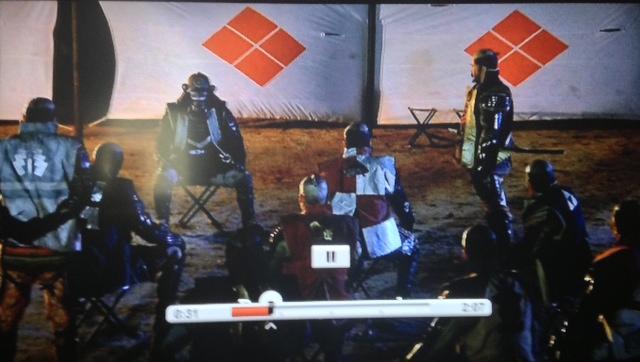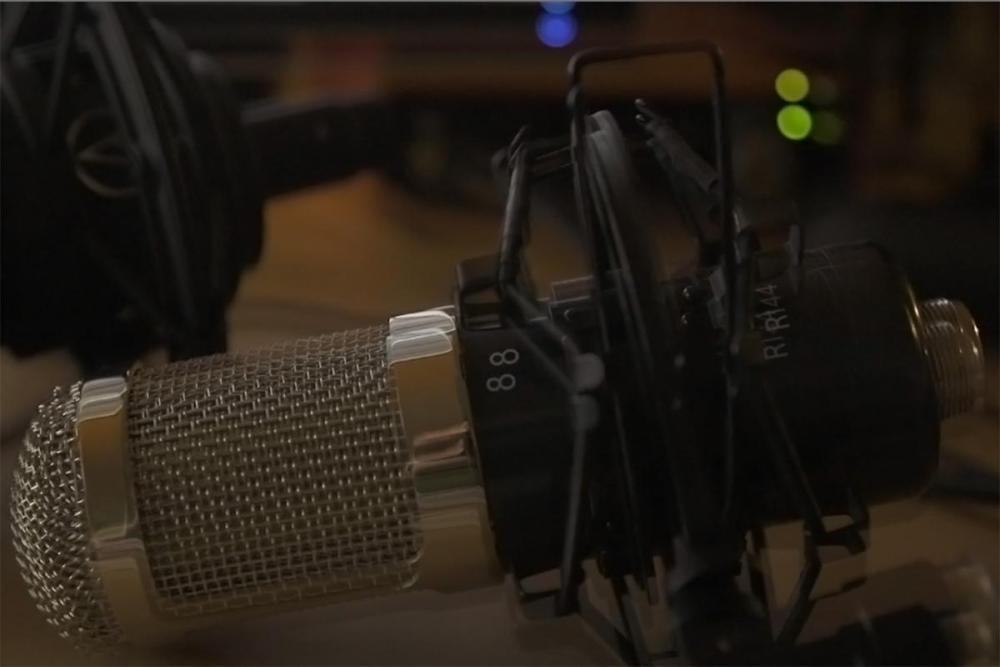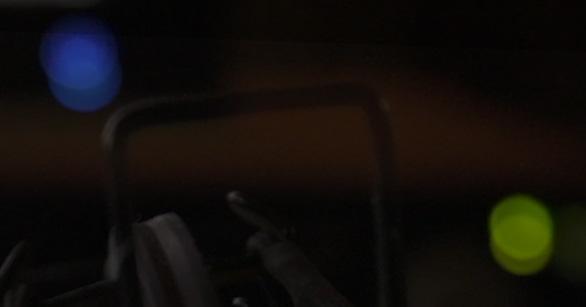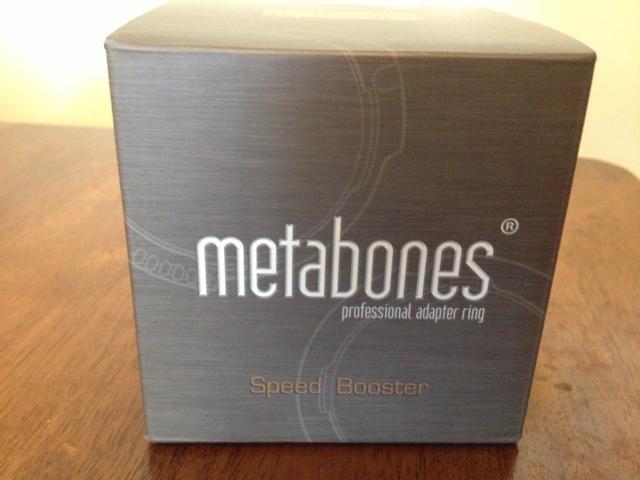-
Posts
1,839 -
Joined
-
Last visited
Content Type
Profiles
Forums
Articles
Everything posted by jcs
-
markm- if the GH2 is 830 TV Lines (horizontal resolution), that would mean the FS700 is less (per Andrew), however the FS100 is rated at 1000+ TV Lines. Are there charts, lab data to support these numbers? Found an FS100 chart: http://www.dvuser.co.uk/images/img/reviews/camcorders/sony-fs100/chart.jpg http://www.dvinfo.net/forum/panasonic-lumix-gf-gh-series/503321-how-many-lines-resolution-gh2.htm http://www.dvxuser.com/V6/archive/index.php/t-232565.html (GH2 rated around 800 lines). Looking at the FS100 and GH2 charts, the FS100 is pretty solid all the way up to 1000 lines (with some artifacts). The GH2 has artifacts at 800 lines. Is there a chart showing the GH2 doing better than 800 lines? (see FS100 chart link above) This result may be due to compressor issues: http://www.eoshd.com/content/6681/shootout-reveals-panasonic-gh2-resolution-at-canon-c300-level In other words, GH2 might have done better in this test due to better compression, where detail was lost for the FS100. From the charts I have seen, the FS100 is doing close to advertised 1000 TV Lines (see FS100 chart link above). Unless there is a GH2 chart showing better results vs. the FS100, I'll move the FS100 back up (FS100 should do much better than GH2 with an external recorder to match/exceed hacked GH2 bitrates). I have a GoPro Hero 3 Black Edition. 1920x1080 looks decent, 2.7K looks OK but suspect it's not really 2.7K (haven't tried 12fps 4K; would guess closer to 3K). I don't have any data from tests showing actual resolution. If someone has a source/link I can take a look and add it to the list.
-
RED Epic has 5120 x 2700 Bayer pattern sensor. As Andrew noted, we need at least 8192 photosites (minimally, in green, horizontally) to actually capture 4096 pixel resolution (Nyquist- math and physics). Right now only the F65 has 8K sensor resolution (which provides for the most part full 4K resolution (but not quite: download the brochure from this page: http://pro.sony.com/bbsc/ssr/show-highend/resource.solutions.bbsccms-assets-show-highend-F65.shtml )). The goal of this list/table is to show actual, measured, real-world performance (which can differ greatly from advertised specs).
-
Updated. Regarding the GH2- how do you know the GH2 provides higher resolution vs. the FS100? Any links to tests/reports etc.?
-
A camera list and resolution chart showing something like this would be helpful (and motivate manufacturers to build products trying to get higher up on this list): After working on this list for a while and seeing more charts, understanding Nyquist sampling theory is helpful ( http://en.wikipedia.org/wiki/Nyquist%E2%80%93Shannon_sampling_theorem ). Take the sensor width in pixels and divide by 2 to get a fair estimate of sampling resolution before aliasing. While aliasing past Nyquist can help make an image, especially a still frame, look sharp, when in motion, an alias-free image, especially with sufficient grain and high-frequency detail, will look most like film. Thus, even though the ARRI Alexa is only a 1080p camera, it currently produces the most film-like image and explains why it is used most when cost is no object. <all cameras below have pro audio quality. Listing SNR & noise floor would be helpful) F65 - 3.9K (8K sensor with a few tricks, not true 4K) - 16-bit RAW RED - 3.xK (6K sensor: Dragon) - Wavelet compressed RAW RED - 2.5K (5K sensor) - Wavelet compressed RAW (see charts in this thread) 1DC - 2.xK - 8-bit MJPEG and H.264 ("4K" mode, need charts) F55 - 2.xK - 10-bit, XAVC, RAW (optional, extra hardware) F5 - 2.xK - 10-bit, XAVC, RAW (optional, extra hardware) FS700 - 2.xK (estimated with "4K" upgrade) - 12-bit RAW (extra firmware and hardware) ARRI Alexa - 1.9K (3.5K sensor) - 444 and RAW - pretty much zero aliasing and very film-like grain (see charts in this thread) BMCC - 1.xK (needs a test chart: will be less the 2.7K, closer to 2K from what I have seen so far) - 12-bit RAW <1/4" audio in> Hero 3 1.xK (needs a test chart) - 8 bit, 2.7K mode, H.264 F3 - 1.9K - 10-bit - Sony Pro CODECS, 10-bit 422 out 1DC - 1.9K - 8-bit H.264 Super 35 Mode C300 - 1.9K - 8-bit, 50Mbps long GOP MPEG2 (422), 8-bit 422 out, minimal aliasing C100 - 1.9K - 8-bit, Very high quality 24Mbps H.264:AVCHD (420), 8-bit 422 out, minimal aliasing FS700 - 1.9Kv, >1.9k diagonal, ~1.6Kh (trumpet chart) - 8-bit - Very high quality 24Mbps H.264:AVCHD, 8-bit 422 out, some aliasing FS100 - 1.9Kv, >1.9k diagonal, ~1.6Kh (trumpet chart) - 8-bit - Very high quality 24Mbps H.264:AVCHD, 8-bit 422 out, some aliasing GH2 - 1.7K - 8-bit,H.264:AVCHD <add hacked bitrates> <not pro audio, add audio details> TM700 - 1.7K - 8-bit, 28Mbps H.264:AVCHD (60p), excellent IS, loud fan (audio issue) <insert popular camcorders such as TM900, G10/XA10, NEX camcorders, XF105/305, etc.> <all cameras below don't provide pro audio> GH3 - 1.8-1.9K? - 8-bit, 90Mbps H.264 I-frame, ~40Mbps IPB <add audio details> Hero 3 1.8-1.9K? - 8 bit, 1080p mode, H.264 1DC - 1.7K* - 8-bit H.264 full frame 1080p mode 1DX - 1.7K* - 8-bit H.264 full frame 1080p 5D3 - 1.6K (post-sharpened) - 8-bit, 90Mbps H.264 I-frame, ~40Mbps IPB <audio - 1/8" stereo mic, average noise floor> 6D - ~1.6K (post-sharpened) - 8-bit, 90Mbps H.264 I-frame, ~40Mbps IPB 5D2 - 1.5K - 8-bit, ~38Mbps H.264 IPB <audio - 1/8" stereo mic, average to poor noise floor> This was a quick write up without verifying some of these items. Anyone interested: please correct and/or add detail to this list. The resolution column is actual resolution of captured frames when displayed as RGB. Sensor resolution and manufacturer claims ignored in favor of actual hardware testing. Cameras such as the 5D3 may exhibit first artifacts around 1200 pixels (600 TV Lines), however detail extinction does not occur until around 1620 pixels (810 TV lines). Thus, it would be helpful to show both first artifacts as well as detail extinction. See also: http://lagemaat.blogspot.com/2007/09/actual-resolution-of-bayer-sensors-you.html *1DC, 1DX 1080p mode: estimated (looks slightly higher resolution vs. 5D3) <TODO> Add supported frame rates. Sony FS100/700 have unusual resolution behavior. Diagonal resolution is 1000+, vertical is ~1000, however horizontal is ~800 (when using a trumpet chart). A line chart shows 1000 or so for horizontal resolution, however aliasing has started. These cameras can also alias on fine horizontal and vertical lines. C100/C300 can also alias, however the cameras provide 1000 lines of resolution on both h and v.
-
No experience with them however for the price and shipping might be worth a try. I use http://oscarsoundtech.com/services.html . They are well known in the industry and are very reasonably priced. However, they require a recording device that can provide power for the mic (email them for price list). Check out the audio forum on Cinema5D. Here's a thread that might be useful: http://cinema5d.com/viewtopic.php?f=32&t=38816 I prefer Tascam (have the DR100MkII) over Zoom (have the H4n), and some of the portable Sony and Olympus devices are much quieter, higher quality for not much more cost. I will probably sell both recorders as the quality isn't that great (in pro audio terms) and using separate audio is a lot more work. In cases where audio capture far from the camera is needed, external recorders make sense (lower cost and more reliable vs. wireless solutions (I use the Sennheiser G3)). If you use a solution (typically with some kind of preamp) to get the gain up high enough to turn down the in-camera gain, in-camera audio can be excellent with very low noise. This is helpful: http://www.avisoft.com/recordertests.htm
-
Where F2.4 has an Aperture Value of 2.5, then the next Aperture Value is 3.5, the next stop is 3.4. sqrt(2^2.5) = 2.378 or 2.4, sqrt(2^3.5) = 3.364 or 3.4. Wolfram Alpha is an excellent tool: http://www.wolframalpha.com/input/?i=sqrt%282%5E3.5%29 (not just for simple calculations- can solve complex equations). Either I'm doing the math wrong or some of the tables on the internet aren't rounded correctly. http://en.wikipedia.org/wiki/F-number http://www.fineart-photography.com/fstop.html
-
This is an image of the Canon 24-105 F4L at 50mm on a 5D3 and FS700+Speed Booster blended 50/50. Max aperture set on 5D3 (F4) and FS700+SB (F4 full-frame DOF with F2.8-like light transmission performance). [attachment=393:FS700+SB_5D3_DOF.jpg] Close up of bokeh: [attachment=394:bokeh_match.jpg] The FS700 S35 sensor with Speed Booster gives full-frame performance with a 1.09 crop, approximately same DOF and FOV performance as full frame, and effectively 1-stop faster light transmission performance. In this example, F4 DOF for both cameras, with the FS700+SB providing F2.8-like light transmission. Where a T-stop is exactly the same as an f-stop with 100% light transmission, then a lens rated with a T-stop of 4 on the 5D3 would have a T-stop rating of 2.8 with the FS700 + Speed Booster.
-
Put a black border around the chart and it becomes clear, otherwise the white line under the text is the closest line visible. As displayed, the outer white line blends with the background and is invisible. Now that you point it out, the white dot shows the hidden outer line. Thanks for clarifying the hidden line. I make mistakes, Stu makes mistakes, you make mistakes- everyone does. That's life. Not being able to admit mistakes is a mistake and a sign of an ego dominating one's mind (which ultimately causes great suffering for that person and those around them). Doing the ad hominem (attacking one personally) in a discussion is a diversion and does not move a discussion forward in any useful way. Back to the point- the math is simple and is exact as long as we know what part of the sensor is imaged. What method do you propose is better than crop factor for helping people understand how a lens used on one camera will function when used on another with a different sensor size?
-
Panasonic lists the GH2 sensor size as 17.3 x 13.0 mm (in 4:3 aspect ratio), top of this page: http://panasonic.net/avc/lumix/systemcamera/gms/gh2/specifications.html . If 19mm x 10.7mm is the physical area used when in video mode, where does Panasonic show this? If 19x10.7 is used: 43.27/sqrt(19^2 + 10.7^2) = 1.98 CF If we use the 16x9 portion of the full frame sensor: 41.3/sqrt(19^2 + 10.7^2) = 1.89 CF. It's clear there is confusion about what part of the sensor is used for video: http://www.dvxuser.com/V6/showthread.php?271187-crop-factor-1-86x-or-2x If we know the correct active sensor area for two cameras, we can compute the crop factor using this simple equation: w1, h1 = camera 1 w,h w2, h2 = camera 2 w,h sqrt(w1^2 + h1^2)/sqrt(w2^2 + h2^2) = CF Stu's chart is not to scale- 36mm (5D et al) is a lot wider than 27.7mm (Red) and 28.45mm (1DC 4K). Perhaps that's causing some confusion? I have a 5D3 and an FS700+SB. The crop factor was computed as 1.09, and seeing the actual video results of both cameras, it looks pretty close (including overlaying both videos and scaling the 5D3 track to 109%). It was understood there might be discrepancy with the numbers, however the math is pretty simple and the concept for using ratios of the diagonals (diameters of the image circles) to help explain how a lens designed for 35mm full frame will work with a smaller sensor is useful. If you have an improved means to make sense of this, lots of folks would like to hear it.
-
Just tested the 422 100Mbps long GOP MPEG2 codec in the Nanoflash with the FS700+SB: the noise detail is finer and cleaner vs. the 24Mbps AVCHD internal codec (as expected); motion artifacts from the codec are mostly gone as well (using higher bitrates would likely remove them completely). Neat Video does do an excellent job cleaning this FS700 footage while maintaining a lot of detail. It appears Canon does more NR in camera (which is helpful for fast turn-around tasks, however Neat Video NR is superior).
-

How to avenge the price of the Canon 1D C and make the camera pay for itself
jcs replied to Andrew Reid's topic in Cameras
One advantage the 1DC has is out-of-the-box nice looking images. I use the 5D3 as a reference to re-tune the FS700+MB output (can match pretty closely). So, the 1DC can save time, and time is money. -
The Nanoflash works well with the FS700. The Sony-supplied 100Mbps MPEG2 MXF codec is a definite improvement over the 24Mbps AVCHD codec. As expected, block artifacts and edge quality is improved. Using the FS700 built-in display with focus peaking, the Nanoflash and LiPo battery don't add too much weight, allowing this setup to be used hand-held and run & gun. Premiere Pro CS6 could not read the MPEG2 with audio in the MOV container. The Nanoflash supports up to 180Mbps long GOP MPEG2 as well as I-frame only mode up to 280Mbps. I'll try 50Mbps long GOP MPEG2 to see it it's good enough (to save disk space: I prefer to keep things small and edit on SSDs). Someday all this gear and image quality will be in one off-the-shelf camera (and probably fit in your pocket ;)).
-
Isn't asbergers what you get when you don't wipe? Asperger's is a form of highly functioning autism- those folks can be geniuses even if their social skills are deficient. Symptoms of crankycantankeritis are common on internet forums, yes? (I grabbed prior numbers from forum posts). Here are direct calculations: 43.27/sqrt(17.3^2 + 13^2) = 2 CF for GH2 43.27/sqrt((17.3/.71)^2 + (13/.71)^2) = 1.42 CF for GH2 with Speed Booster 43.27/sqrt(15.81^2 + 8.88^2) = 2.39 CF for BMCC 43.27/sqrt((15.81/.71)^2 + ((8.88/.71))^2) = 1.71 CF for BMCC with Speed Booster 43.27/sqrt((23.4/.71)^2 + (15.6/.71)^2) = 1.092 CF for NEX with Speed Booster Plug in different numbers for sensor width/height if the ones I found are not accurate (it appears full sensor frame is used vs. video mode area, etc.). To get 1.6 CF with BMCC+SB, would need a 16.7mm x 9.5mm sensor. Now, back to my epic cat video for youtube.
-
Crop factor is super useful to help understand how lenses will work with digital cameras: http://en.wikipedia.org/wiki/Crop_factor Correction (Speed Booster)- I think the 1.6 CF was for the BMCC; 1.32 CF for m43 (APS-H). Slow motion with the FS700 and 18-200mm kit lens (autofocus worked pretty well; also auto ISO to deal with change in brightness while zooming): https://vimeo.com/58075075
-
I have seen minor aliasing with FS700 footage (in slomo) but not so apparent yet at 24p. For low light, the FS700 is fine so far. The noise cleans up very well in Neat Video if necessary (and stays much sharper than 5D3 footage). As an all-around tool, the FS700+SB is pretty solid. Canon does do a better job with highlight transients, however a little post work can help FS footage and the results can be more film-like. I didn't consider the C100/C300/1DC as they aren't full frame (1DC's 1080p full frame is soft- similar to 5D3). Too bad Premiere Pro doesn't support an easy way to write GPU accelerated pixel shaders- might be possible to write a real-time shader to fix the highlight transients. I should also (finally) read the manual and see if turning off in-camera sharpening can help.
-
Tested lenses (Canon): 50 F1.4 (F1.0) - excellent low light at F1.0 with some CA when pixel peeping (or using zoom focus assist) 24-105 F4L IS (F2.8) - works well- no issues noted so far. Nice to have this lens at F2.8 16-35 F2.8L II (F2.0) - works very well. On the 5D3 is a bit soft at 16mm: much sharper and detailed on the FS700+MB at 16mm 70-200 F2.8L II IS (F2.0)- amazing lens is amazinger on the FS700+MB. Detail/sharpness is excellent! IS (when available) & aperture control worked on all lenses. Autofocus apparently only works in photo mode on the FS700 (didn't try it yet). Autofocus on the 18-200mm kit lens works very well- excellent for sports (will post slomo soccer footage shot on this lens).
-
The m43 version will have a 1.6 crop, bringing it up to Super35 (APS-C). Sounds like it will provide higher performance (MTF) vs. the NEX version.
-
Perhaps best to crop the 5D3 to match the other camera (1.09 crop), else it's easy to spot the difference.
-
Yes, I now own an FS700 due to the release of the SB. I would not have considered that camera if it were not for the possibility to finally upgrade the 5D3 to something close to the full-frame look with true 1920x1080 resolution. There is nothing on the market (that I am aware of) for any price right now that can also do what this combo does (this combo is a 1.09 crop). For high quality shots, I'll be using a Nanoflash (I prefer the option of a high quality long GOP compressor vs. enormous-file I-only codecs (ProRes, DNxHD)- also considered the Atomos Samurai and Sound Devices Pix 240i). So far the internal 24Mbps codec isn't too shabby, but I can see there's room for improvement with an external higher bitrate 422 recorder. Sony's XAVC (on paper) looks awesome. I've been looking forward to someone using more of the H.264 spec for a long time (422/444, 10 or more bits). H.264 is more efficient than anything else: now with GPU acceleration (and fast multicore CPUs) it's not hard to edit without transcoding. Convergent's Nanoflash uses a Sony codec- perhaps their hardware has enough power to support XAVC. Might be a worthy (paid) upgrade. Regarding the F5/F55- excellent cameras for sure. However, they are not true 4K cameras (probably around 3K or so actual resolution; the FS700 will likely be around 3.2K when it supports "4K"). Sony markets the F65 as true 4096x2160. It would be nice if a blogger had a page showing cameras and their actual resolution. Shot a few clips last night with my only non-L lens- the Canon 50 F1.4. Wow- shooting F1.0 is really cool! Zooming in, there's some CA/coma (Chromatic Aberration), but can't really be seen watching footage normally.
-
This is a really quick test*: executive summary- it works. More details on vimeo page. https://vimeo.com/57994446 * someone already did a chart test: http://www.lensrentals.com/blog/2013/01/metabones-magic
-

APS-C and Super 35mm just went full frame - Metabones Speed Booster
jcs replied to Andrew Reid's topic in Cameras






